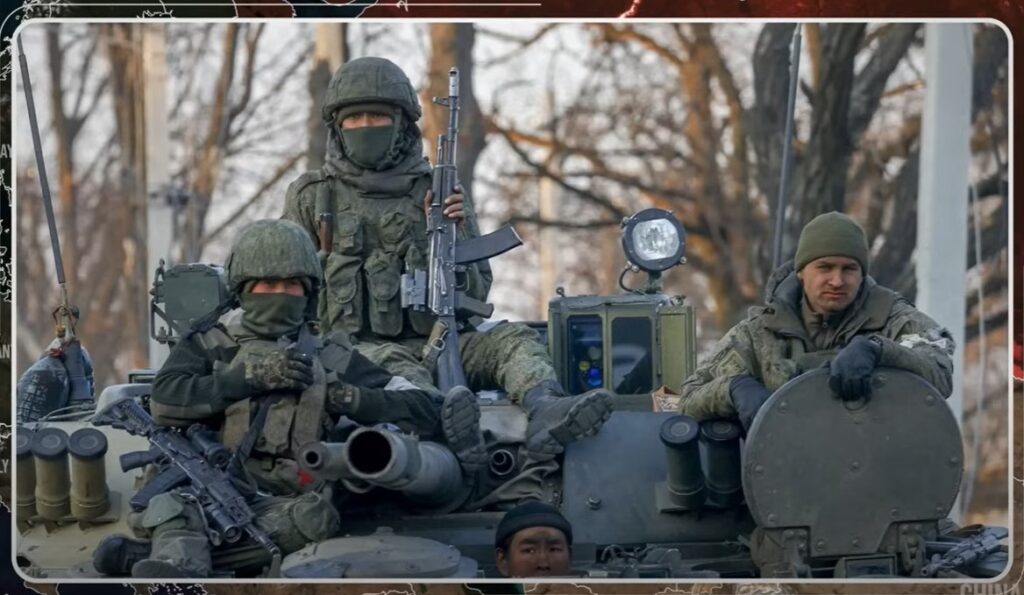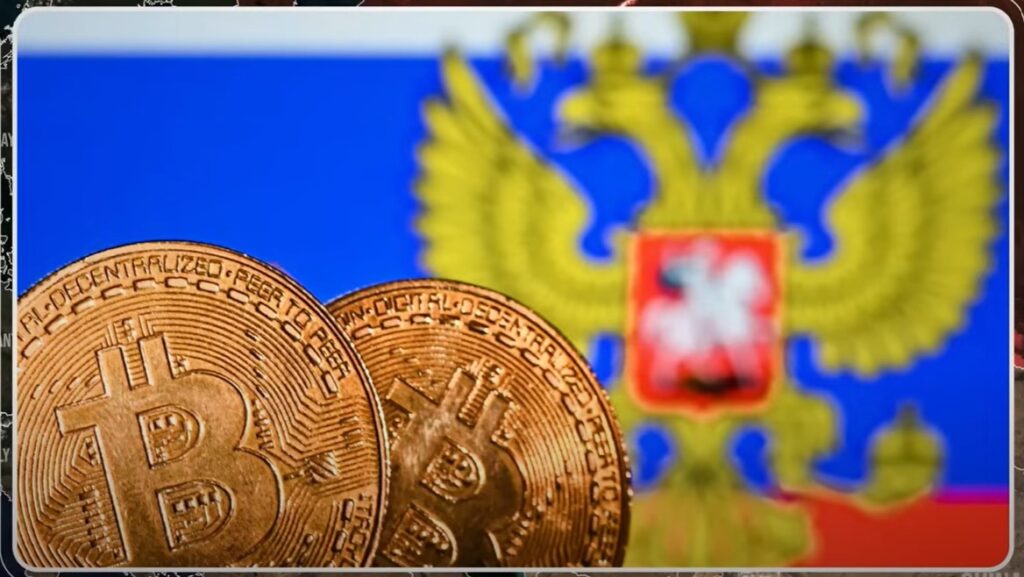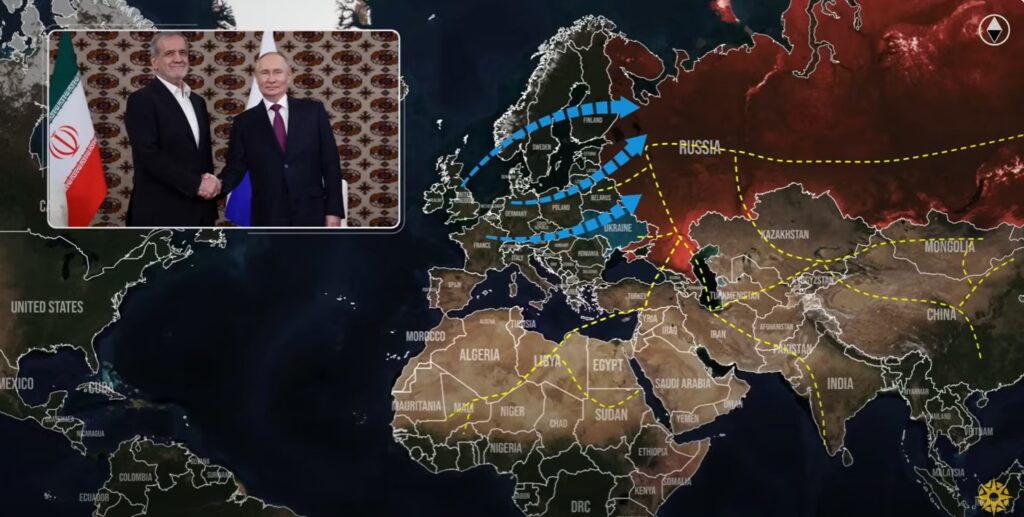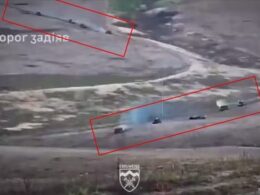Today, the biggest news comes from the Russian Federation. Russian oil revenue is collapsing faster than expected, with over a third evaporating as global energy prices drop and sanctions tighten. In response, the Kremlin has turned to offshore crypto schemes in a last-ditch effort to stay financially afloat—an unusual and revealing sign of just how unstable its financial position has become.
Russia’s oil revenues just dropped nearly 30% in June compared to the same month last year, bringing in just under $5.4 billion, with total oil and gas revenue falling by a third. This sharp decline stems from falling oil prices, Russia’s shrinking market share, and decreasing exports as shadow fleet routes face growing interference.

Budget deficit soars to $45 billion
These figures are not just technical; they expose the collapse of a revenue stream that once funded nearly half the Russian national budget. As a resource-exporting economy, or petrostate, Russia has long relied on oil and gas exports to support everything from social payments to military procurement. In wartime conditions, with sanctions increasing and operating costs surging, the Russian federal budget cannot absorb these losses for long. The annual deficit is now estimated to be over 2.5% of Russian GDP, roughly translating to $45 billion.
To close the gap, Moscow is burning through reserves and raising domestic borrowing, but cannot sustain these efforts for long. Unless replacement income is found, Russia’s ability to sustain high-intensity operations in Ukraine while also running the country will start to break down.

Kremlin pushes crypto to raise funds
To compensate, Russian authorities have launched a cryptocurrency project aimed at generating income and skirting sanctions. The A7A5 cryptocurrency, created in Kyrgyzstan, is reportedly backed by Promsvyazbank, Russia’s main defense-linked bank, and Ilan Shor, a fugitive oligarch known for Moldova’s billion-dollar fraud. The system generates income by selling tokens, charging transaction fees, and incentivizing activity to attract users. It mimics a functioning payment network, allowing the Kremlin to extract value from users or controlled intermediaries.

Russia uses crypto to dodge sanctions
Separately, it helps circumvent sanctions by hiding who is sending and receiving money. Crypto wallets don’t require verified identities, and payments can be routed through anonymous channels outside the SWIFT international banking system. This provides Russian entities with a way to acquire restricted goods or pay foreign actors while avoiding Western surveillance.
Although over $9 billion in transactions has been reported already, most of this volume is likely artificially inflated by moving funds between accounts run by the same person to simulate real usage, creating the illusion of popularity and large-scale adoption. Even if the platform works, it falls far short of what Russia needs. A single cryptocurrency cannot replace tens of billions of dollars in lost oil and gas revenue this year, nor can it match the reliability of formal trade routes.
Trending Now

Digital currency can’t plug oil gap
To make a real dent in its deficit, Russia would need significantly higher usage and trade partners willing to accept this currency at scale, all while avoiding legal consequences from Western regulators now scrutinizing suspicious crypto transactions. With no clear entrance into stable markets and nothing backing the currency, the project remains marginal in economic returns and politically radioactive due to the threat of secondary Western sanctions.

Moscow risks pariah status with crypto move
Unless Russia either expands this cryptocurrency drastically or builds multiple parallel networks to launder and move money—catering to underworld organizations—it will remain a fringe tool, not a lifeline. This would essentially make Russia act as a banker for arms traffickers, criminal syndicates, and terrorist networks already accustomed to moving money through untraceable systems.
That may keep the flow alive in the short term, but it also places Russia deeper into pariah status with its allies on the geopolitical stage.
Overall, Russia’s turn to cryptocurrency reflects improvisation and desperation, not strategy. The budget hole left by collapsing oil revenue is too large for a crypto scheme to fill, and while creative, it is built more for evasion than resilience. Unless Moscow finds a real alternative to its former energy income, the strain will spread—not just on the battlefield in Ukraine, but across the entire Russian war economy. What we are witnessing is not a new financial model, but a state trying to keep the lights on with tools made for evasion and black market trade, not endurance.
In our regular frontline report, we pair up with the military blogger Reporting from Ukraine to keep you informed about what is happening on the battlefield in the Russo-Ukrainian war.

Technology is Ukraine's chance to win the war. This is why we're launching the David vs. Goliath defense blog to support Ukrainian engineers who are creating innovative battlefield solutions and are inviting you to join us on the journey.
Our platform will showcase the Ukrainian defense tech underdogs who are Ukraine's hope to win in the war against Russia, giving them the much-needed visibility to connect them with crucial expertise, funding, and international support. Together, we can give David the best fighting chance he has.
Join us in building this platform—become a Euromaidan Press Patron. As little as $5 monthly will boost strategic innovations that could succeed where traditional approaches have failed.





